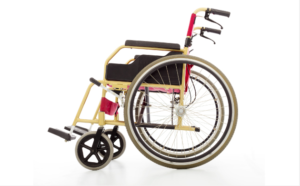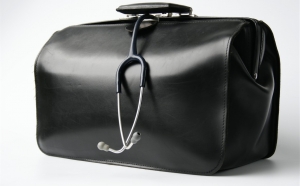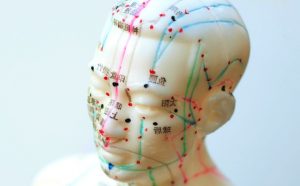Project Description
Symptoms and Treatment of Hip Arthrosis
Hip arthrosis is a very common chronic inflammatory condition that affects both men and women, most commonly at an elderly age. The hip is an important joint because it connects the lower limb to the trunk.
Hip arthrosis, also known as Coxarthrosis, is the consequence of a degeneration or the cartilage that covers the surface of the articulation between the acetabulum and the head of the femur, and which serves to protect these two bones. as a consequence of this degeneration, the cartilage thins and this leads to an abnormal rubbing between the underlying bones, which become inflamed.
Arthrosis is a slow process that does not develop overnight, it is important to recognise the symptoms at an early stage so as to start rehabilitation aimed at slowing down the process as much as possible.
Hip Arthrosis Symptoms
The onset of arthrosis is always preceded by inflammatory processes that involve both tendons and muscles. The symptoms of this inflammation are similar to those of osteoarthritis, with the difference that in Arthrosis the joint is stiff, whereas it is not where the inflammation only involves the muscles.
Early stages symptoms therefore originate from the muscles, and involvement of the joint then follows. Symptoms can show up on one hip or both, although they usually tend to involve one side more than the other.
Generally early symptoms of a hip arthrosis are:
– pain when you stand up after sitting, as muscle stiffness cannot bear the rapid stretching;
– pain when walking;
– pain in the groin or lower back;
– stiffness
Causes
Hip arthrosis is not usually caused by a single factor, but this condition can be a result of concomitant factors which lead to a degeneration.
In some cases the problem is congenital, such as in congenital hip dysplasia. Dysplasia is a condition diagnosed at birth and it occurs when the joints are not properly formed, resulting in a dislocation.
Causes can also be physiological: with ageing, wear, trauma, fractures and infections can easily facilitate arthrosis. Moreover, there are also some risk factors such as a sedentary lifestyle, obesity, diabetes and other forms of arthritis.
What appers in the X-Rays?
An x-ray in a hip arthrosis patient often reveals a reduction in the space between the head of the femur and the pelvis, sclerosis (wear) of the femoral head and the presence of osteophytes (small calcifications typical of arthrosis). Symptoms may seem to appear suddenly and without any warning, but if the X-ray shows a state of arthrosis, it means that the problem has been developing for months or years. In other cases, despite severe hip pain, the x-ray may be normal. In this case, evidence has shown that the problem is mainly related to the muscles, rather than the joint.
Consequences
Hip arthrosis tends to progress over time and goes through different stages of severity. For some patients the only solution is surgery, but for most people, especially when the joint degeneration process is not too advanced, a good rehabilitation can make the muscles work better.
Physiotherapy for Hip Arthrosis
The physiotherapy approach is generally divided in two steps: firstly, the practitioner will understand the causes of joint overload, and secondly, they will restore joint functionality as far as this is possible. The rehabilitation in case of hip arthrosis is based on:
– joint mobilization, to minimize stiffness;
– loosening of muscle tension through stretching exercises;
– strengthening of the muscles through stretching and specific exercises.
It is impossible to say whether this will end the wear process of the joint; however, working on the muscles is still the best thing to do.
How to Deal with Hip Pain
If you suffer from hip pain you can follow few tips in order to improve the situation:
– a protocol of exercises adapted to your case
– a food plan that helps to remove inflammation and ensure intestinal well-being (very important for the hip)
– a series of tricks and exercises also aimed at other aspects of your posture, which can affect the hip
Hence weight control, constant practice of healthy physical activity and prevention of hip injuries can reduce the risk of developing arthrosis.
Therapy:
Pharmacological treatments, by mouth or by infiltration, can be good adjuvants, but they must be limited in time. Dietary supplements can also help, but obviously they don’t work miracles. When wear is excessive and the symptoms are very severe, prosthetic replacement surgery is generally recommended (hip prosthesis).
The surgery involves the replacement of the damaged joint surfaces with a titanium, plastic and/or ceramic prosthesis. This kind of surgery has excellent results, tih long lasting results (todays’ prosthesis can last over 15 years) and recovery is fast, especially nowadays thanks to the newer, less invasive techniques.
What can really be Done for Hip Arthrosis?
There are no real forms of prevention For hip arthrosis. However, muscle strengthening and rehabilitation, in general, can be important to reduce muscle contractions that increase compression on the joint and also to strengthen the muscles and make the pelvis-hip complex work better. Having better working muscles results in a major reduction in symptoms in most cases. And even if your hip is destined for surgery, much better to get there with strong muscles. For this reason physiotherapy is always a good approach. For pain management, acupuncture has also been shown to be effective.
Home and Online Physiotherapy
We have seen so far why it’s important to start a good muscle strengthening and physiotherapy program right away. Medelit offers the possibility to start the rehabilitation plan directly at home, reducing stress, waiting time and allowing you to feel confident and safe in your home. We also offer acupuncture home visits and consultant visits with our leading UK Orthopaedic Surgeons, both at home and online, and home nurse care is also available if you need support in the first days back home.
You Might Find These Home Visiting Services Useful… |

Physiotherapy

Orthopaedic Surgeon

Nutritional Therapy





